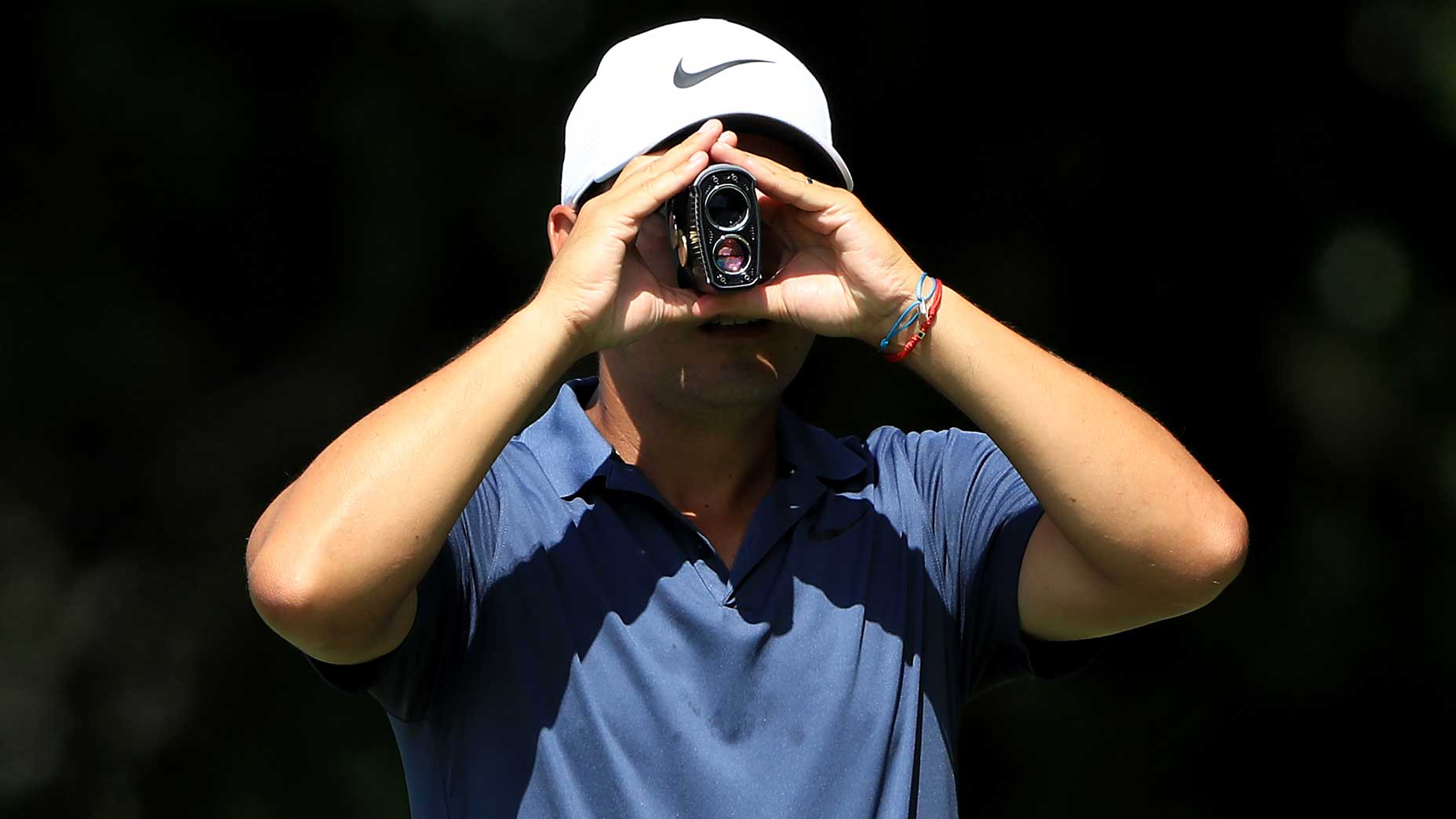It’s been just three days since the PGA of America announced it would allow the use of rangefinder measuring devices during its major championships, and just about everyone has weighed in. Players, caddies, media members and Twitter trolls alike.
Will it improve pace of play, or “flow,” like the PGA insists? Some think yes, others defiantly say no. Some have landed on, “What’s the hurt?” To better understand how rangefinders could impact the flow of an event, we enlisted the advice of Alex Noren’s caddie, Austin Gaugert.
Gaugert is a former Division I golfer who has caddied for years at the top level and is Mr. Everything when it comes to providing info for Noren. I asked him to envision the 17th at Pebble Beach, a world-renowned par-3 that will get plenty of TV time this weekend. Here is a list of the many details Gaugert would be tasked with supplying, with an asterisk next to which ones a rangefinder can accurately help with:
– Carry distance on line of target (many shots are not played directly at the hole)
– Distance to back of green (you don’t want to go over, do you?)
– Line to safe zone (the area where a slight miss won’t hurt)
– Distance to safe zone (make sure you at least get there)
– Distance to hole** (voila! rangefinders come in handy here)
– Space behind landing zone (when the 17th plays long and firm, shots kick forward)
– Space short of landing zone (but they won’t kick forward unless they reach the green)
– Distance from nearest side of the green (how far left or right can you miss and still hit the green)
– Distance to clear various bunkers (anything less than crisp contact could end up here)
– Wind direction (it’s not always straight in off the Pacific Ocean)
– Wind strength (it gets breezy at Pebble)
– Tiers of greens (the 17th has a spine running down the middle of it)
– Distances to various tiers (stopping the ball on certain plateaus means a potential birdie)
– Up-and-down tendencies from various bunkers and misses (if we miss, here’s where it’ll be good or bad)
So, what’s the point? There’s still a lot for caddies and players to consider before hitting a shot, most of which a rangefinder won’t help with. And to be fair, each player-caddie duo is different, and Gaugert-Noren are likely on the faster side of the spectrum. Noren doesn’t even use a meterage book himself, so anything he wants to know, he goes to Gaugert.
Inserting a rangefinder into their process will confirm the distance to the pin, but won’t provide the exact detail that players of this caliber thrive on. “You can’t shoot the front edge of a bunker with a rangefinder,” Gaugert says. “Or as accurately as we need it.”
And of course, when you do intend to measure the distance to the flag, he pointed out, you can only do so once the group ahead has placed it back in the hole. All other figures can be tabulated irrespective of other groupings.
The truth of the matter for most caddies is that yardage and meterage books are so jam-packed with information that they will likely never be replaced. Almost everything you need is right there, in your pocket. There’s a reason those books cost players and caddies hundreds of dollars each week, and thousands over the course of a season.
The rangefinder can obviously assist — they are used frequently during practice rounds — but when all the answers are in the book, is it possible that confirmation process could slow play down? It’s an argument many caddies have made thus far.
Where rangefinders might be most useful is for players who hit incredibly errant tee shots, perhaps landing in the wrong fairway altogether. Measuring that distance with a device is a piece of cake. Triangulating that distance via sprinkler heads located a full lob wedge away is not. But that’s where golf purists contend caddies can really prove their worth. Take this recent example from Torrey Pines’ North Course:
During a practice round, Noren had witnessed another player play the 5th hole (a dogleg left par-5) by advancing up the adjacent 6th. During the first round, already two under, Noren asked Gaugert on the tee box if he thought he could deliver the correct distance into the 5th green from the 6th fairway. Gaugert said yes, so Noren changed his line off the tee, intentionally played into the 6th hole and made birdie thanks to some good math.
Should players who miss fairways — intentionally or by accident — be rewarded with knowing the exact distance to the hole? Only if he has a good caddie, Gaugert would argue. And not with the tap of a button.
Need help with your own course management? Pick up a green book from our sister company, Golf Logix.
